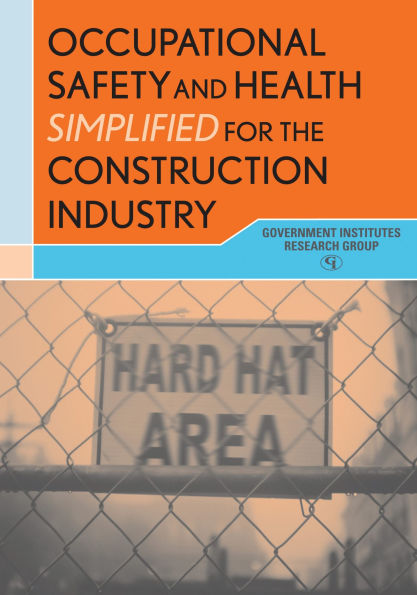This reference serves construction businesses and managers who want quick answers to complicated questions. It makes the difficult task of complying with the 29 CFR 1926 regulations easier to manage. From General Safety Provisions to Fall Protection to Toxic and Hazardous Substance, it examines the standards of 29 CFR 1926 one-by-one with non-technical, implementor-friendly explanations of the requirements and how to fulfill them. It provides a breakdown, subpart by subpart, of the training standards for the construction industry.
In addition, the book shows how to prevent the four leading causes of fatal accidents, which ten OSHA standards construction sites violate most often, and how non-Spanish-speaking managers can effectively communicate safety requirements with Spanish-speaking employees.
It provides answers to a broad range of compliance questions, including who is obligated to observe the law, what the law requires, what OSHA compliance obligations are, and how state OSHA standards compare to federal OSHA standards.
1104555688
In addition, the book shows how to prevent the four leading causes of fatal accidents, which ten OSHA standards construction sites violate most often, and how non-Spanish-speaking managers can effectively communicate safety requirements with Spanish-speaking employees.
It provides answers to a broad range of compliance questions, including who is obligated to observe the law, what the law requires, what OSHA compliance obligations are, and how state OSHA standards compare to federal OSHA standards.
Occupational Safety and Health Simplified for the Construction Industry
This reference serves construction businesses and managers who want quick answers to complicated questions. It makes the difficult task of complying with the 29 CFR 1926 regulations easier to manage. From General Safety Provisions to Fall Protection to Toxic and Hazardous Substance, it examines the standards of 29 CFR 1926 one-by-one with non-technical, implementor-friendly explanations of the requirements and how to fulfill them. It provides a breakdown, subpart by subpart, of the training standards for the construction industry.
In addition, the book shows how to prevent the four leading causes of fatal accidents, which ten OSHA standards construction sites violate most often, and how non-Spanish-speaking managers can effectively communicate safety requirements with Spanish-speaking employees.
It provides answers to a broad range of compliance questions, including who is obligated to observe the law, what the law requires, what OSHA compliance obligations are, and how state OSHA standards compare to federal OSHA standards.
In addition, the book shows how to prevent the four leading causes of fatal accidents, which ten OSHA standards construction sites violate most often, and how non-Spanish-speaking managers can effectively communicate safety requirements with Spanish-speaking employees.
It provides answers to a broad range of compliance questions, including who is obligated to observe the law, what the law requires, what OSHA compliance obligations are, and how state OSHA standards compare to federal OSHA standards.
101.7
In Stock
5
1

Occupational Safety and Health Simplified for the Construction Industry
194
Occupational Safety and Health Simplified for the Construction Industry
194Related collections and offers
101.7
In Stock

Product Details
| ISBN-13: | 9781591919797 |
|---|---|
| Publisher: | Bloomsbury Publishing |
| Publication date: | 06/14/2007 |
| Sold by: | Barnes & Noble |
| Format: | eBook |
| Pages: | 194 |
| File size: | 474 KB |
From the B&N Reads Blog
